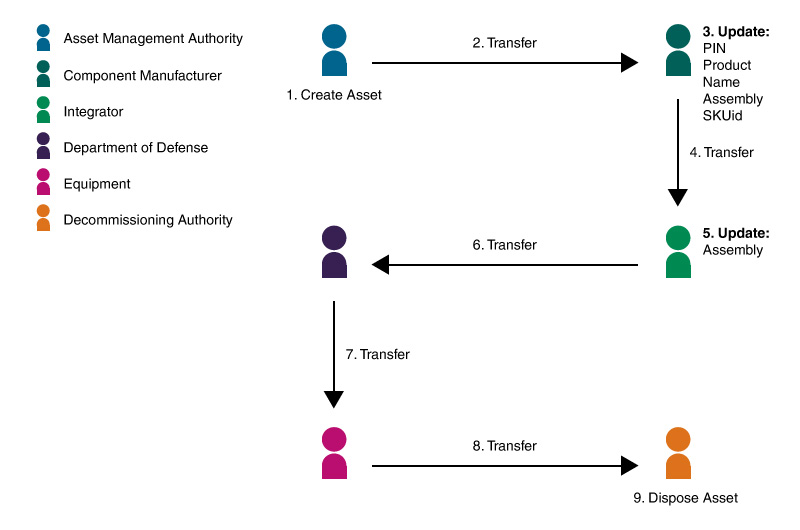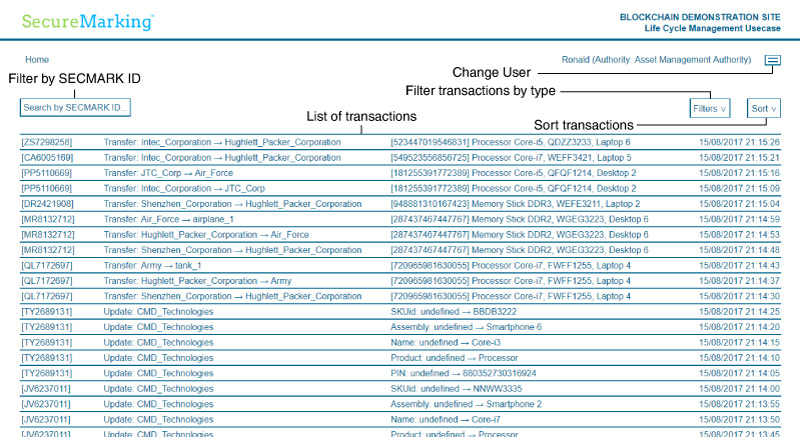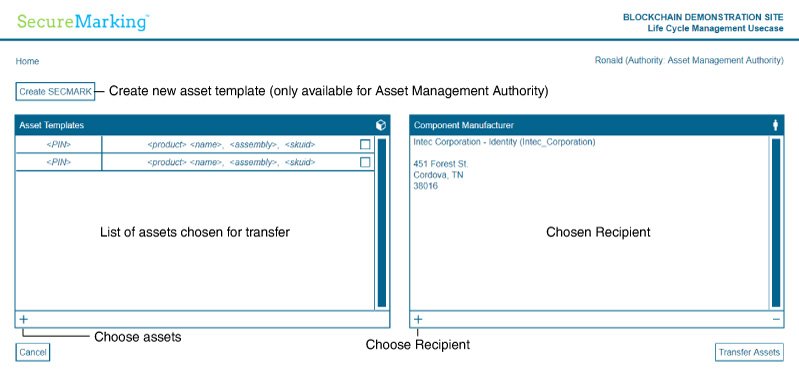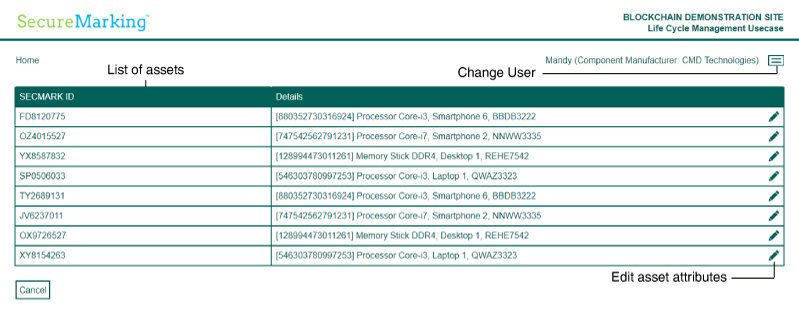This application is designed to demonstrate how the life cycle of an asset can be modeled on a blockchain. This guide will briefly explain how you can use this website to understand how the application works.
In this application, each asset is modeled using the following attributes:
| Attribute |
Type |
|---|---|
| SECMARK | Unique string composed of two characters and 7 digits |
| PIN (Product ID Number) |
15 digit number |
| Product | Alpha-numeric string |
| Name | Alpha-numeric string |
| Assembly | Alpha-numeric string |
| SKUid | Alpha-numeric string |
| Owner | Identity of participant |
| Disposed |
A boolean variable indicating the assets disposal status |
Each attribute is written to the blockchain. This means once an asset attribute is committed to the blockchain, it cannot be changed by any participant. This is due to the immutable nature of blockchains.
Each attribute has its own access permissions which are defined in the blockchain. The participants can read all attributes for assets they own, however they can only change the attributes they are permitted to through the blockchain. These permissions are defined as follows:
| Participant |
Permissions |
|---|---|
| Asset Management Authority |
Create assets Read all assets Transfer own assets |
| Component Manufacturer |
Read own assets Update PIN, Product, Name, Assembly, SKUid Transfer own assets |
| Integrator (OEM) |
Read own assets Update Assembly Transfer own assets |
| Department of Defense |
Read own assets Transfer own assets |
| Equipment | Read own assets Transfer own assets |
| Decommissioning Authority |
Read own assets Dispose own assets |
The asset life cycle consists of the following stages:

These stages are explained as follows:
- The Asset Management Authority creates an asset template.
- The asset template is transfered to the Component Manufacturer.
- The Component Manufacturer updates the asset PIN, Product, Name, Assembly and SKUid attributes. Note that the Component Manufacturer cannot transfer the asset to the next participant with updating the asset attributes.
- The asset is transfered to the Integrator (OEM).
- The Integrator updates the asset Assembly attribute.
- The asset is transferred to the Department of Defense.
- The Department of Defense transfers the asset to some equipment.
- Upon completion of the assets useful life, the asset is transferred to the Decommissioning Authority.
- The Decommissioning Authority disposes the asset.
There are four basic types of screens in the application.
Transaction History
This screen shows the transaction history of each asset in the blockchain. The Asset Management Authority can view all transactions in the system. The rest of the participants can only see transactions of assets they've owned, upto the point where they tranfer them to the next participant.

Transaction Query
This screen enables users to enter a SECMARK ID to query the last accessible status of the asset, returning the transaction type, location and time of the transaction.

Transfer Assets
This screen allows participants to transfer assets they own to other participants.

Update Assets
This screen allows participants with update permissions to update the attributes for each asset they own.
